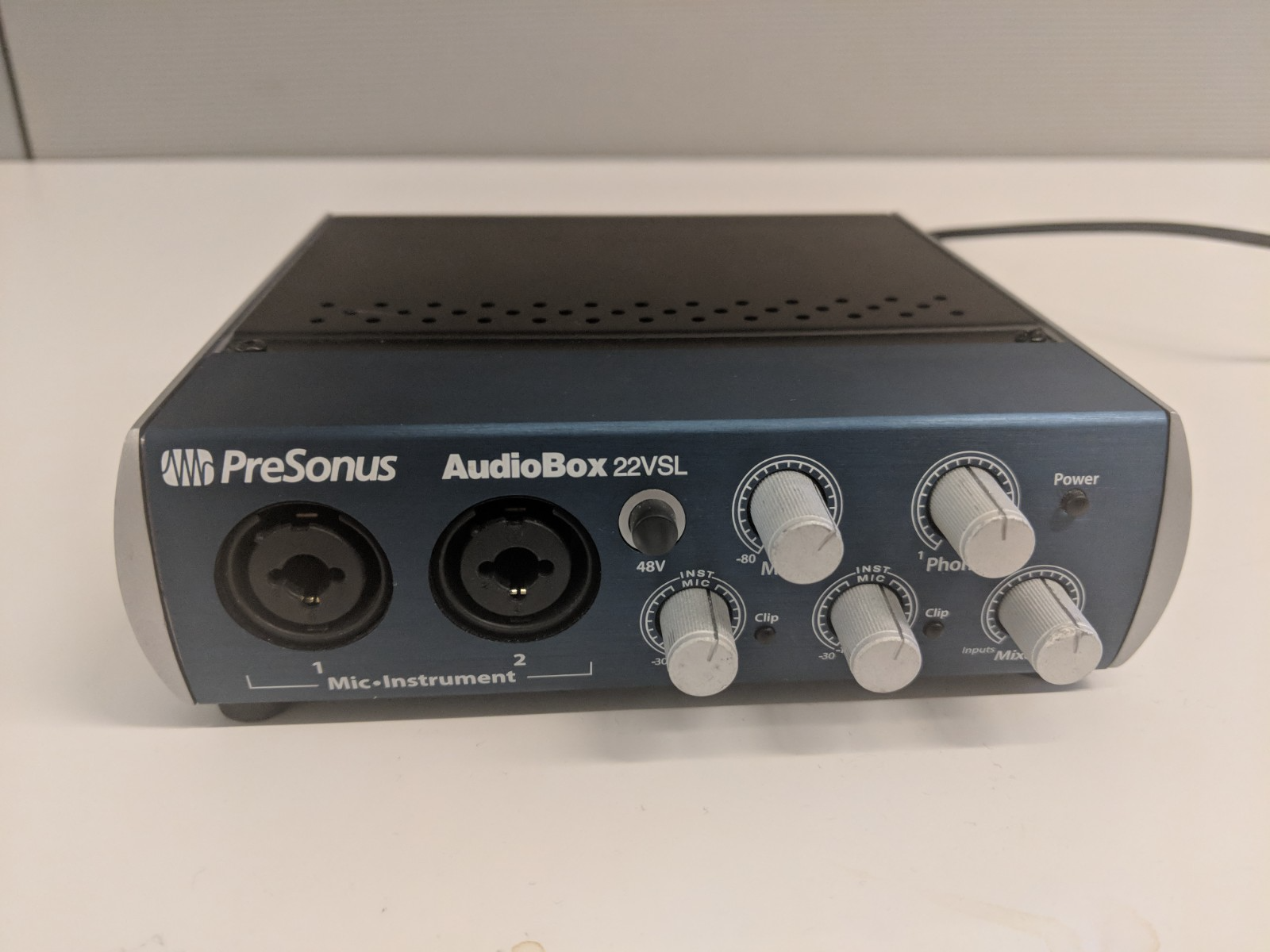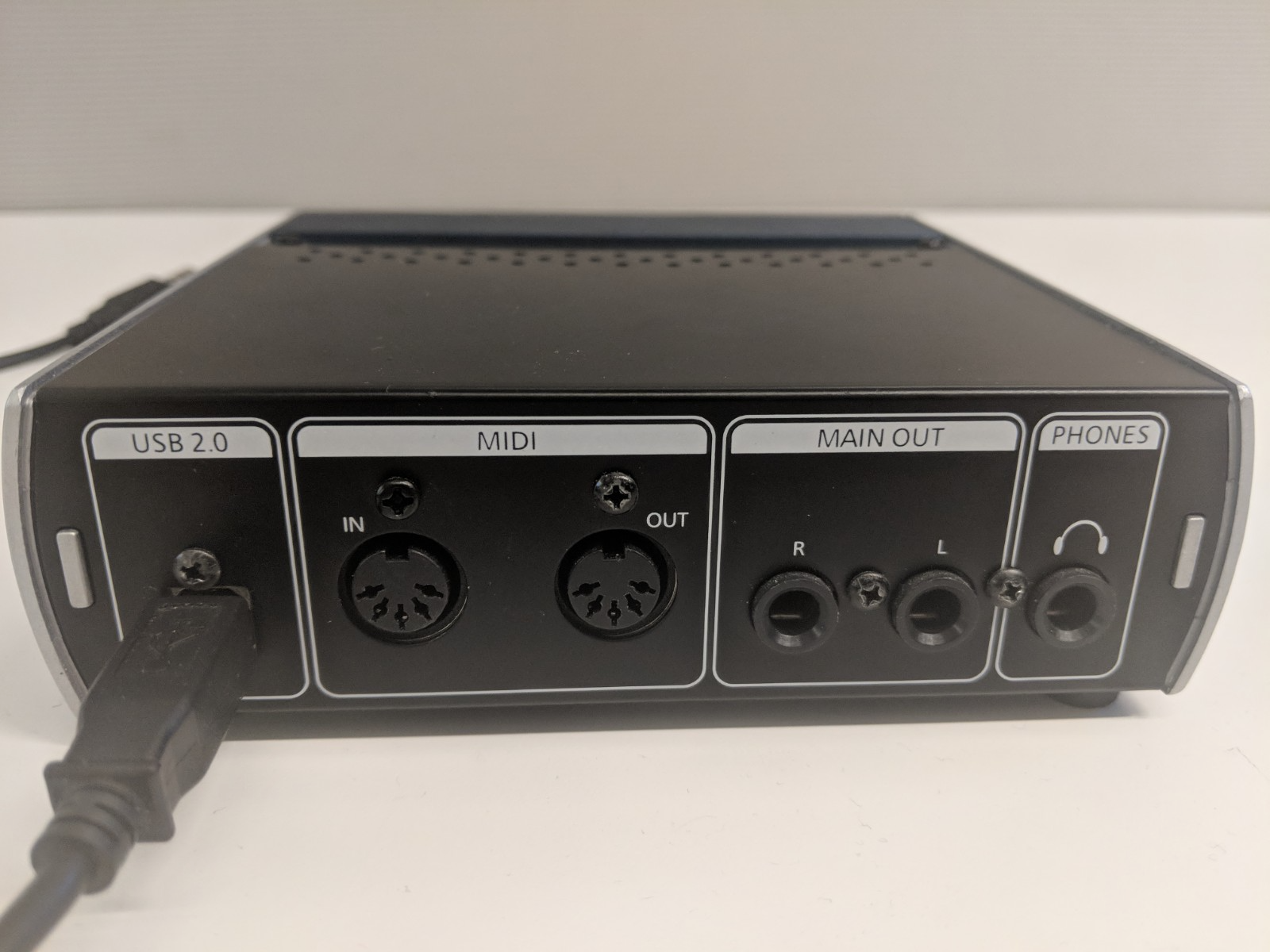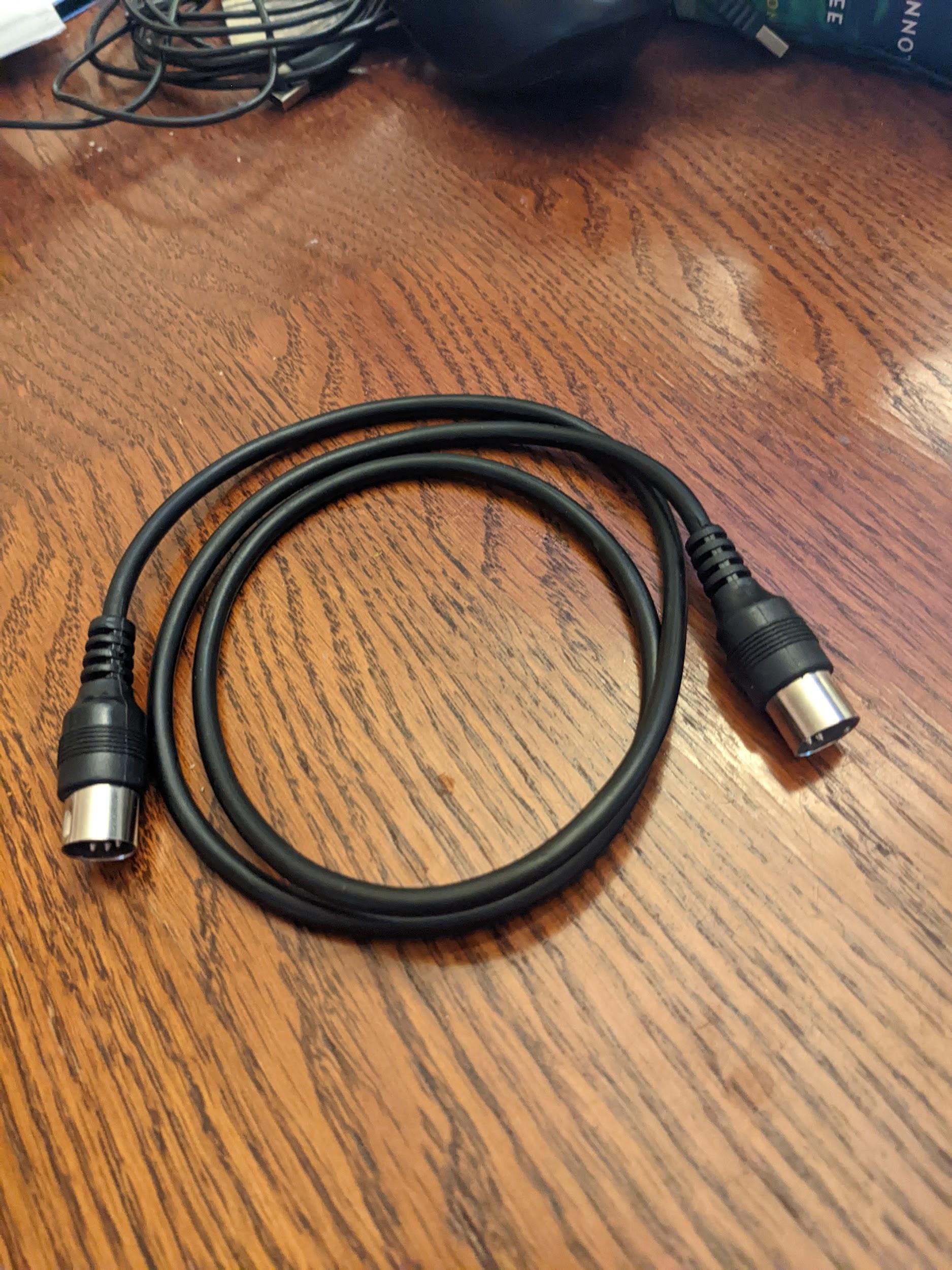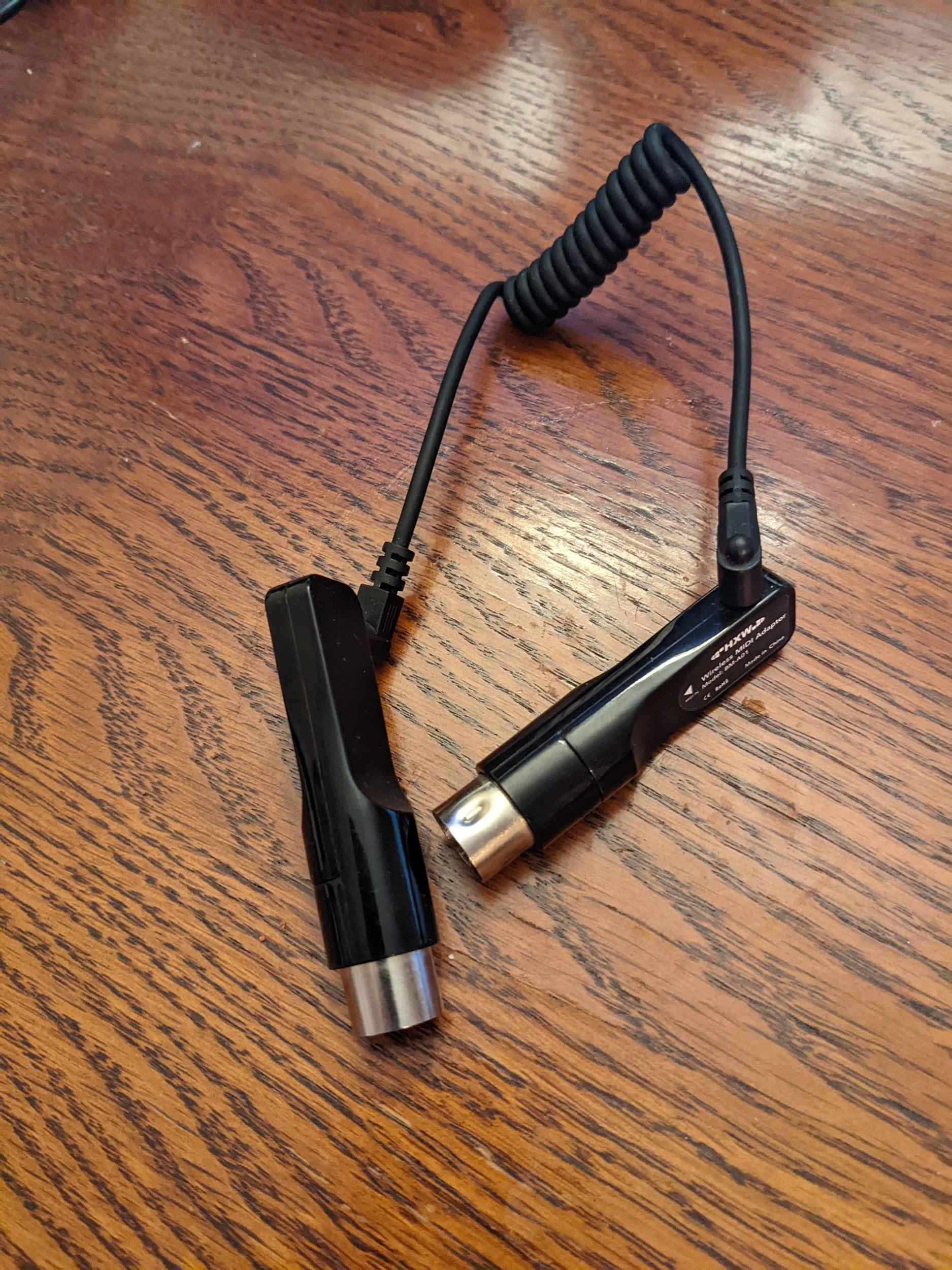다음 테스트는 MIDI(Musical Instrument Digital Interface) 시스템과 연결된 C 또는 C++ API(네이티브 MIDI 테스트용) 및 Java language API(JAVA MIDI 테스트용)가 예상대로 작동하는지 확인합니다. 이 테스트의 요구사항은 다음과 같습니다.
- 필수 주변기기: 연결된 루프백 케이블이 있는 MIDI 주변기기
다음 그림은 연결된 루프백 케이블이 있는 MIDI 주변기기를 보여줍니다.

그림 1. MIDI I/O 포트가 있는 USB 오디오 인터페이스 전면

그림 2. MIDI I/O 포트가 있는 USB 오디오 인터페이스 후면

그림 3. 표준 5핀 DIN MIDI 케이블

그림 4. Yamaha MD-BT01 또는 Roland WM-1과 같은 블루투스 MIDI 인터페이스
루프백 테스트
모든 루프백 테스트는 테스트 주변기기를 통해 일련의 MIDI 메시지를 보내고 데이터를 루프백한 다음 기기의 입력을 모니터링하여 수신된 데이터가 전송된 데이터와 일치하는지 확인합니다.
다음 테스트를 모두 통과해야 앱에서 통과로 표시할 수 있습니다.
USB MIDI 루프백 테스트
- USB 오디오/MIDI 인터페이스 주변기기에서 표준 5핀 DIN MIDI 케이블을 사용하여 MIDI 입력을 MIDI 출력에 연결합니다.
- USB 오디오/MIDI 인터페이스 주변기기를 테스트 대상 기기(DUT)에 연결합니다. DUT가 연결된 주변기기를 인식하면 테스트 화면에 기기 이름(입력 및 출력)이 표시되고 USB MIDI 인터페이스 테스트 버튼을 사용할 수 있게 됩니다.
- USB MIDI 인터페이스 테스트를 탭합니다.
- 테스트가 완료될 때까지 기다린 후 테스트 화면에서 보고된 결과를 확인합니다.
가상 MIDI 루프백 테스트
이 테스트에는 외부 하드웨어가 필요하지 않습니다.
- 가상 MIDI 인터페이스 테스트를 탭합니다.
- 테스트가 완료될 때까지 기다린 후 테스트 화면에서 보고된 결과를 확인합니다.
블루투스 MIDI 루프백 테스트
- Play 스토어에서 MIDI BLE Connect 앱을 다운로드하여 설치합니다.
- USB 오디오/MIDI 인터페이스 주변기기에서 블루투스 MIDI 인터페이스를 USB 오디오/MIDI 인터페이스 뒷면에 있는 MIDI 입력 및 출력 커넥터에 연결합니다. 블루투스 MIDI 인터페이스의 커넥터는 특정 방향이 있습니다.
- 블루투스 MIDI 인터페이스의 INPUT 플러그는 USB 오디오/MIDI 인터페이스의 INPUT 잭에 연결해야 합니다.
- 블루투스 MIDI 인터페이스의 OUTPUT 플러그는 USB 오디오/MIDI 인터페이스의 OUTPUT 잭에 연결해야 합니다.
- USB 오디오/MIDI 인터페이스 주변기기를 DUT에 연결합니다.
- MIDI BLE Connect 앱을 실행합니다. USB 주변기기에 연결된 블루투스 MIDI 기기를 검색합니다. 이 블루투스 MIDI 기기를 선택합니다.
- DUT가 연결된 주변기기를 인식하면 테스트 화면에 기기 이름(입력 및 출력)이 표시되고 블루투스 USB MIDI 인터페이스 버튼이 사용할 수 있는 상태가 됩니다.
- 블루투스 USB MIDI 인터페이스를 탭합니다.
- 테스트가 완료될 때까지 기다린 후 테스트 화면에서 보고된 결과를 확인합니다.
